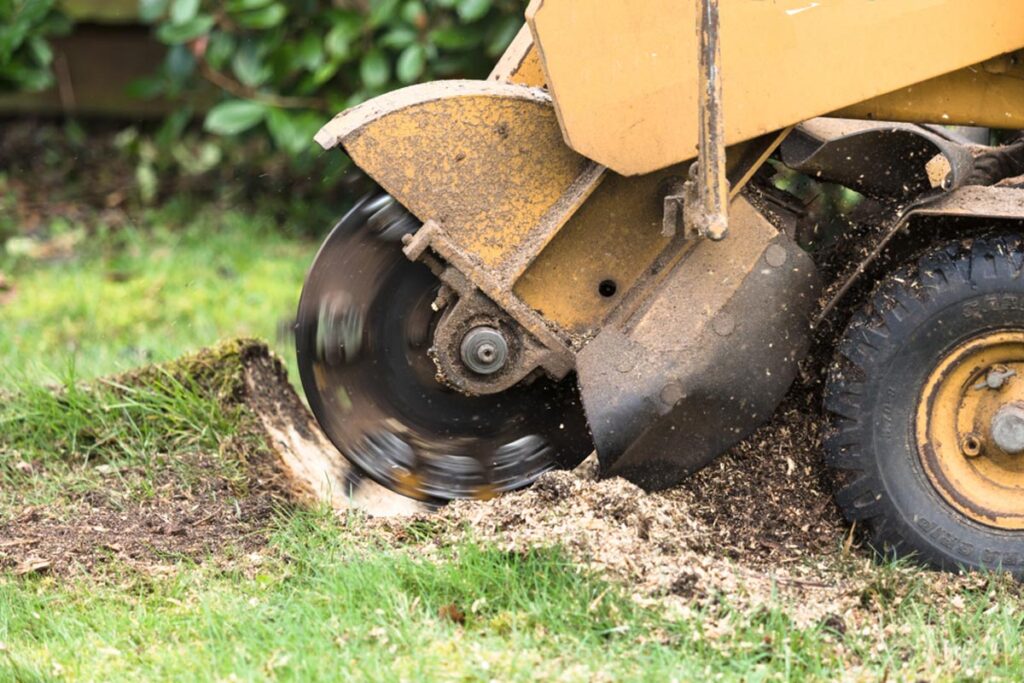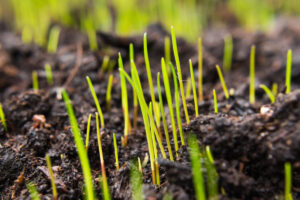Removing tree stumps is crucial for enhancing landscape aesthetics, ensuring safety, and preparing for new construction or planting. The costs associated with tree stump removal vary based on several factors including the size of the stump, the chosen removal method, and specific conditions such as accessibility and the type of tree. This guide delves into the factors that affect the pricing of stump removal services, providing a detailed breakdown.
Cost Breakdown by Stump Diameter
The diameter of the stump significantly impacts the cost of removal, with larger diameters requiring more extensive labor and more robust machinery.
Detailed Cost Analysis by Stump Diameter
| Stump Diameter | Average Cost to Remove |
|---|---|
| Up to 12” | $30 – $70 |
| 24” | $50 – $150 |
| 36” | $70 – $220 |
| 48” | $100 – $290 |
| 60” | $120 – $360 |
| 72” | $150 – $430 |
Note: These prices generally apply to stump grinding, with minimum charges ranging from $80 to $160. Discounts may be available for multiple stump removals.
Explanation of Costs:
- Up to 12 inches: Removal of small stumps is less labor-intensive and can often be completed quickly, reflecting in the lower cost range. This size typically involves straightforward grinding with minimal complication.
- 24 inches: A medium-sized stump requires more time and a larger grinding machine, which contributes to the higher cost. The machine must work longer to fully grind down the stump and roots.
- 36 inches: Large stumps necessitate extended labor and potentially multiple machinery passes, driving up the cost. The increased diameter significantly adds to the time required for complete removal.
- 48 inches and above: These stumps are particularly challenging due to their substantial mass and the depth of their root systems. The cost increases as the stump diameter enlarges, requiring advanced equipment and potentially more than one technician to handle the job safely and effectively.
Average Cost of Stump Removal by Method
Different methods of stump removal also influence the overall cost. Each method has its advantages and is suitable for different situations based on the stump's characteristics and location.

Method-Specific Costs
| Removal Method | Average Cost per Stump |
|---|---|
| Stump Grinding (first stump) | $120 – $400 |
| Stump Grinding (each additional) | $30 – $60 |
| Stump Grinding (per inch) | $2 – $6 |
| Digging up | $80 – $190 |
| Chemical Rotting | $100 – $200 |
| DIY Burning | $50 – $200 |
Further Details:
- Stump Grinding: This is the most common and effective method for complete stump removal. It involves using a machine to grind down the stump to below ground level. The first stump often costs more due to setup and transportation of the machinery, while additional stumps can be removed at a reduced rate.
- Manual Digging: Best for smaller or less complex stumps, this method involves physically digging out the stump and roots. It's labor-intensive and time-consuming, especially for larger stumps.
- Chemical Rotting: This involves applying chemicals to accelerate the decay of the stump. It's less invasive but takes longer for the stump to decompose fully.
- DIY Burning: A less common method due to safety risks and legal restrictions. It involves drilling holes in the stump and burning it from the inside out. This method is highly dependent on local regulations regarding open fires.
Stump Grinding Equipment
Stump Grinder: Stump grinders are the primary tool for professional stump removal, featuring a rotating cutting disc that chips away the wood. These machines range in size from small, portable units that can be maneuvered by hand to large, commercial-grade models mounted on trucks or tractors. Smaller grinders are ideal for residential properties and can navigate through narrow spaces to reach the stump. Larger models offer more power and efficiency, quickly handling stumps of any size and reducing them to sawdust and wood chips.

The process involves moving the grinder's cutting wheel back and forth over the stump's surface, gradually reducing the stump to below ground level. The depth of grinding can be adjusted depending on how deep the user wants to remove the wood, commonly up to 12 inches below the soil line to allow for easy resodding or planting.
Safety Gear: The operation of stump grinders poses several safety risks, primarily from flying debris. Operators must wear protective equipment, including:
- Safety Glasses or Goggles: To protect eyes from wood chips and dust.
- Hearing Protection: Stump grinders are loud, and prolonged exposure to noise can cause hearing damage.
- Sturdy Gloves: To protect hands from vibrations and potential contact with the grinder's moving parts.
- Steel-toed Boots: To safeguard feet from heavy pieces of the stump or equipment.
- Hard Hat: Especially in environments with larger trees or when working with overhead hazards.
Manual Removal Tools
Shovel or Spade and Mattock or Pickaxe: These basic hand tools are used to dig around the stump, exposing as much of the root system as possible. A shovel or spade is used to remove the soil around the stump, while a mattock or pickaxe helps in loosening the earth and cutting through thicker roots. This method is labor-intensive and can be very time-consuming, especially for larger or more tenacious stumps with extensive root systems.
Axe or Chainsaw: Once the stump is loosened and roots are exposed, an axe or chainsaw may be required to cut the stump into smaller pieces. This makes it easier to extract from the ground. Axes are suitable for chopping through smaller, softer stumps, while chainsaws provide the necessary power for harder, larger stumps.
Winch or Come-Along: For stumps that are particularly stubborn, a winch or a come-along can be used to apply force and pull the stump out from the ground. This method is effective for stumps with deep root systems, where manual extraction becomes impractical. The use of these tools requires a strong anchor point and careful handling to avoid sudden movements that could cause injury.

Chemical Removal Supplies
Drill and Chemical Stump Remover: Chemical removal involves using a chemical stump remover, typically potassium nitrate, to accelerate the decomposition of the stump. The process starts with drilling deep holes into the stump, spaced around the top surface. These holes are then filled with the chemical remover mixed with water, which seeps into the wood and breaks down the lignin holding the cellulose fibers together.
This method is less labor-intensive than physical removal but requires patience; it can take several weeks or even months for the stump to decompose enough to be easily removed or burned. Chemical removal is an option for those who prefer a less physically demanding method, though it does carry environmental risks, such as chemical leaching into the soil.
Burning Equipment
Drill, Potassium Nitrate, and Fuel: Burning is another method for stump removal. It involves first preparing the stump by drilling holes and filling them with potassium nitrate or a similar accelerant. After the chemical has soaked into the stump, it is ignited, usually with the aid of a fuel such as kerosene or vegetable oil.
This method is effective for completely removing the stump, as the fire consumes both the wood and the roots below the ground. However, burning is controlled and should only be done in compliance with local regulations, as it poses a fire hazard. The process is relatively quick but requires careful monitoring to ensure the fire does not spread to other areas.
Excavation Equipment
Backhoe or Excavator: In situations where multiple stumps need to be removed, especially in larger development areas, heavy machinery like backhoes or excavators might be employed. These machines can quickly dig out stumps and their roots, which is particularly useful in preparation for construction projects.
Using such equipment requires significant space and access, as these large vehicles need to maneuver close to the stump. This method is the most disruptive to the landscape but provides an immediate solution to stump problems. It's also the most costly in terms of rental and operational expenses but is unmatched in efficiency for large-scale removals.
Each of these methods and their corresponding equipment has specific applications, advantages, and considerations. The choice of method will depend on the stump's characteristics, the surrounding environment, budget, and how quickly the stump needs to be removed.
Tree Stump Removal FAQs
Why is tree stump removal important?
Tree stump removal is crucial for several key reasons:
- It prevents the spread of diseases from old trees to healthy plants.
- It facilitates the clearing of land for construction or paving projects.
- It prepares the area for the installation of amenities like swimming pools.
- It eliminates tripping and fire hazards, enhancing safety.
- It simplifies and secures the process of lawn mowing.
- It halts the infestation of pests and fungi.
- It prevents the re-sprouting of robust tree roots.
- It boosts the aesthetic appeal of a property, potentially increasing its market value.
Who is qualified to remove tree stumps?
Tree stumps can be effectively removed by professionals such as landscapers, arborists, tree removal specialists, tree trimming companies, excavators, and land-clearing experts. These professionals are equipped with the necessary tools and expertise to safely and efficiently handle stump removal tasks.
What is the quickest method to remove a tree stump?
Utilizing a stump grinder is the quickest method to remove a tree stump. This machine is specifically designed to rapidly break down the stump into wood chips, making it faster than other methods like manual digging, applying chemicals for root decay, or burning.
How much time does it take to remove a tree stump?
The duration for stump removal can vary:
- Grinding a stump typically takes between 15 minutes to 1 hour for a stump measuring 10” to 15”.
- Manual excavation of a stump generally lasts from 1 to 3 hours.
- Chemical rotting or burning of stumps can extend from several days to weeks, depending on the stump's size and the hardness of the wood, with extra-large hardwood stumps requiring additional time for complete removal.
Understanding the various factors that influence tree stump removal costs can help homeowners and property managers make informed decisions when budgeting for landscaping projects. Whether opting for mechanical grinding, manual removal, or chemical treatments, it's important to consider the specific needs of the site and any local regulations that may apply.




